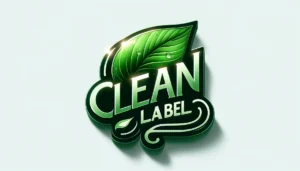Harmful Additives in Foods: 7 Emulsifiers to Watch Out For
We often overlook the subtle dangers in the ingredient lists of our favorite packaged products in our quest for convenience and longer shelf lives. Emulsifiers, common in many processed foods, promise smooth textures and stability. But what is the cost? A comprehensive study with over 100,000 participants in France has revealed a concerning link between these additives and an increased risk of Type 2 diabetes. This blog post delves into the world of harmful additives in foods. It explores the risks and shows how choosing clean label products, like Keto PowerFlax Baking Mix, can benefit our health.
What Are Emulsifiers and Where Are They Found?
Food manufacturers use emulsifiers to mix ingredients that would typically separate, like oil and water. These additives enhance the texture and consistency of food products, making them more appealing. Emulsifiers are found in a wide array of products, including industrial cakes, bread, biscuits, desserts, yogurts, ice creams, chocolate bars, margarine, and ready-to-eat meals.
Common Usage in Grocery Products
Emulsifiers are pervasive in processed foods found in nearly every aisle of the grocery store. For example:
- Baked goods: Emulsifiers help maintain the soft texture of cakes and bread.
- Dairy products: They stabilize the consistency of yogurts and ice creams.
- Dressings and sauces: Emulsifiers keep ingredients like oil and vinegar from separating in products like mayonnaise and salad dressings.
- Confectionery: They are used in chocolates and candies to improve texture and shelf life.
Recognizing Emulsifiers in Products
Consumers can identify emulsifiers in product ingredients lists by looking for terms like ‘lecithin,’ ‘gums,’ ‘carrageenan,’ or chemical names often starting with an ‘E’ followed by a number (common in the EU), such as:
- Lecithin (E322): Common in chocolate and baking products.
- Carrageenan (E407): Found in dairy products and dairy alternatives.
- Xanthan Gum (E415) and Guar Gum (E412): Used in gluten-free products and dressings.

Harmful Additives in Foods: The Research Linking Emulsifiers to Diabetes
Researchers have recently shed light on how emulsifiers might increase the risk of Type 2 diabetes. They conducted a study involving 104,139 adults in France, tracking their health and dietary habits over 14 years, from 2009 to 2023. Participants reported their food and beverage intake every six months, including the brand names of industrial products they consumed.
This study stood out because it matched dietary records against databases to identify the presence of food additives like emulsifiers. Researchers then used laboratory tests to measure precise amounts of these additives in the participants’ diets.
Over the study period, doctors diagnosed 1,056 cases of diabetes. These diagnoses were verified using multiple data sources. After adjusting for factors such as age, sex, BMI, education, family history, lifestyle habits, and diet quality, the researchers found a significant link. Chronic exposure to certain emulsifiers increased the risk of Type 2 diabetes over seven years.
Breaking Down the Risks Associated with Specific Emulsifiers
The study identified several emulsifiers that pose varying levels of risk for Type 2 diabetes. Here’s a breakdown of each emulsifier and its associated risk increase:
- Carrageenans (total carrageenans and E407): Consumption of carrageenans can lead to a 3% increased risk of diabetes per 100 mg/day increment.
- Tripotassium phosphate (E340): This emulsifier shows a 15% increased risk per 500 mg/day increment.
- Mono- and diacetyl tartaric acid esters of mono- and diglycerides of fatty acids (E472e): Each 100 mg/day increment in consumption results in a 4% increased risk.
- Sodium citrate (E331): A 4% increased risk per 500 mg/day increment is linked to this additive.
- Guar gum (E412): An 11% increased risk per 500 mg/day increment is associated with this substance.
- Gum Arabic (E414): This widely used additive leads to a 3% increased risk per 1000 mg/day increment.
- Xanthan gum (E415): Consumption of xanthan gum increases diabetes risk by 8% per 500 mg/day increment.
These findings suggest that while some emulsifiers may pose a relatively low risk, others, like Tripotassium phosphate and Guar gum, significantly elevate the risk, emphasizing the need for consumers to pay close attention to the ingredients in their food.
Beyond Diabetes: Other Health Risks of Emulsifiers
In addition to increasing the risk of type 2 diabetes, emulsifiers have been linked to a variety of other health issues. This connection is particularly concerning given their widespread use in the food industry.
Inflammation and Gut Health
Researchers have found that certain emulsifiers may disrupt the normal bacterial flora in the gut. This disruption can lead to increased inflammation, which is a known risk factor for several chronic diseases. Furthermore, chronic inflammation is often associated with conditions such as inflammatory bowel disease, including Crohn’s disease and ulcerative colitis.
Cardiovascular Diseases
Moreover, the inflammatory response triggered by emulsifiers can also contribute to cardiovascular diseases. Studies suggest that long-term exposure to these food additives might affect cholesterol levels and heart health, potentially leading to heart disease.
Cancer Risk
Additionally, ongoing research suggests a possible link between food emulsifiers and an increased risk of cancer. The mechanisms are not yet fully understood, but the interaction between emulsifiers, gut microbiota, and the body’s inflammatory response appears to play a key role.
Thus, the potential health risks of emulsifiers extend well beyond diabetes. They underscore the importance of scrutinizing food labels and choosing products wisely. As we continue to learn more about these additives, it becomes increasingly clear that opting for simpler, less processed foods can contribute significantly to overall health.
Harmful Additives in Foods: Choose Clean Label Products
As we navigate the complexities of food additives like emulsifiers and their potential health risks, it becomes increasingly vital to focus on clean label products. These are items that boast a minimal and understandable ingredient list, free from unnecessary additives and chemicals.
Why Clean Labels Matter
Clean label products align with a growing consumer demand for transparency in food production. People want to know what is in their food and how it’s made, seeking options that contribute to their health and well-being without compromising on safety.

Benefits of Clean Label Products
- Healthier choices: By avoiding additives known to cause health issues, clean label products offer a safer, healthier alternative.
- Better nutrition: Foods with simpler, purer ingredients are often more nutritious, containing higher levels of beneficial nutrients.
- Environmental sustainability: Clean label products frequently emphasize organic or sustainably sourced ingredients, which have a lower environmental impact.
Keto PowerFlax Baking Mix is a Clean Label Solution
In the context of clean labeling, the Keto PowerFlax Baking Mix stands out as an exemplary product. Manufactured with health-conscious goals in mind, this mix is:
- Vegan: Suitable for those following a plant-based diet.
- Keto-friendly: Compliant with ketogenic dietary requirements.
- Rich in nutrients: High in fiber, protein, and omega-3 fatty acids, supporting overall health.
- Versatile: Can be used in a variety of baked goods, from bread and cookies to pizza crust and waffles.
Choosing products like Keto PowerFlax Baking Mix not only supports healthier eating habits but also encourages the food industry to prioritize consumer health and product integrity.
The Need for Further Research and Regulation
While the evidence linking emulsifiers to health risks is growing, there is a clear need for further research to understand the full implications of these additives. More comprehensive epidemiological studies are necessary to establish causal relationships, and detailed toxicological studies can help clarify the mechanisms through which emulsifiers affect health.
Current Regulatory Landscape: Currently, food additives like emulsifiers are approved based on safety evaluations that may not fully account for long-term effects or interactions with other food components. This situation highlights the need for updated regulations that consider the latest scientific findings.
Advocating for Change:
- Reevaluation of safety standards: Authorities should reassess the safety of widely used emulsifiers, especially those linked to significant health risks.
- Transparent labeling: It is crucial to enforce stricter labeling laws to ensure consumers are well informed about the additives in their food.
- Promoting clean labels: Encouraging the use of fewer additives in food products can help reduce potential health risks.
As researchers and policymakers work to address these concerns, consumers can play a role by choosing products that align with healthier, more natural diets.
Final Thoughts
The link between emulsifiers and health risks such as Type 2 diabetes underscores the importance of scrutinizing what we consume. By understanding the potential dangers of harmful additives in foods and opting for clean label products like Keto PowerFlax Baking Mix, we can take significant steps towards healthier lifestyles.
Informed choices not only enhance our personal health but also push the food industry towards greater transparency and responsibility. Let’s prioritize our health by choosing wisely and advocating for a food system that values purity and safety.
Check the labels on your food. Choose products with simple, understandable ingredients. Consider clean label options like Keto PowerFlax Baking Mix for your baking needs, and enjoy the benefits of a healthier, more natural diet. Together, we can influence the market and encourage more food companies to reduce unnecessary additives.
Check the labels on your food. Choose products with simple, understandable ingredients.
References:
- Food additive emulsifiers and the risk of type 2 diabetes:analysis of data from the NutriNet-Santé prospective cohort study. The Lancet (PDF)
- Food Additive Emulsifiers and Their Impact on Gut Microbiome, Permeability, and Inflammation: Mechanistic Insights in Inflammatory Bowel Disease. Journal of Crohns and Colitis
- Food Additives, Gut Microbiota, and Irritable Bowel Syndrome: A Hidden Track. PubMed
A Note to Commercial Bakeries

- You can easily produce delicious clean label, keto-friendly products which are high in protein, high fiber and plant-based!
- Recipes provided on all bulk orders, with ongoing customer support
- Worldwide shipping
- To order, visit our wholesale distributor, SnowCap Enterprises, and search: Powerflax Gold Low Carb Mix (SNC80).
- Want to get in touch? Just fill out the form below!

